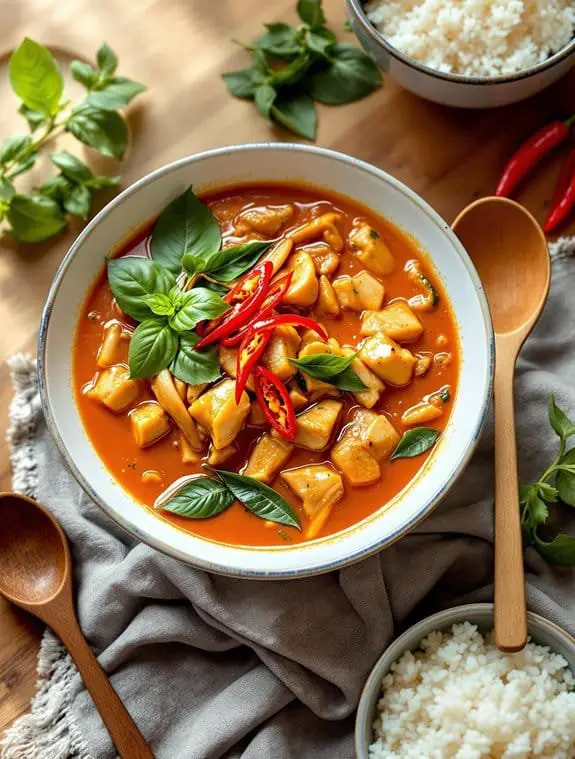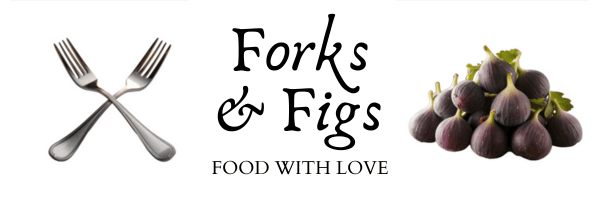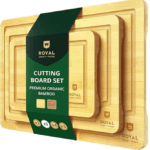Authentic Thai Red Curry Recipe: Rich & Aromatic

I’m about to share something that’ll transform your weeknight dinner game forever – and trust me, it’s easier than you think. This authentic Thai red curry recipe delivers restaurant-quality flavors without the fuss, the drama, or the need to pronounce complicated ingredient names correctly. You know that rich, creamy, aromatic curry you’ve been craving? The one that makes your kitchen smell like a Bangkok street market? Well, there’s a secret most people don’t know.
Why You’ll Love this Authentic Thai Red Curry
Comfort food doesn’t get much better than a steaming bowl of Thai red curry, and trust me, once you taste this authentic version, you’ll wonder why you ever settled for the watery, bland stuff from takeout containers.
This recipe delivers exactly what red curry should be: rich coconut milk that coats your spoon, aromatic curry paste that fills your kitchen with intoxicating smells, and layers of complex flavors that dance on your tongue.
It’s surprisingly simple to make, requiring just one pot and basic techniques that won’t intimidate even nervous home cooks.
What Ingredients are in Authentic Thai Red Curry?
The beauty of authentic Thai red curry lies in its surprisingly short ingredient list. While the flavors are complex and sophisticated, you probably already have most of what you need hiding in your pantry and fridge right now.
What makes this curry so approachable is that each ingredient plays a specific, essential role without any unnecessary complications. No exotic ingredients that require a treasure hunt through specialty stores, no complicated prep work that’ll have you questioning your life choices.
Ingredients:
- 2-3 tablespoons red curry paste
- 2 cups coconut milk (divided)
- 1 pound chicken, cut into bite-sized pieces
- 3/4 cup bamboo shoots (optional)
- 1 tablespoon palm sugar or brown sugar
- 1 tablespoon fish sauce (or to taste)
- Kaffir lime leaves (optional)
- Handful of fresh Thai basil leaves
- Red chili peppers (optional, for extra heat)
Getting the Best Results from Your Ingredients
The coconut milk is absolutely vital here, and not all cans are created equal. Look for full-fat coconut milk that’s thick enough to separate when you shake the can. That separation isn’t a flaw, it’s exactly what you want for creating that rich, glossy curry base.
Red curry paste quality varies wildly between brands. The good news is that even mediocre paste becomes magical when you fry it properly in that separated coconut oil. Don’t stress too much about finding the perfect brand, just avoid anything that lists sugar as the first ingredient.
Fish sauce might smell like low tide, but it’s the secret to that deep, savory complexity that makes restaurant curry so addictive. Start with less than the recipe calls for, taste, then add more. You can always add, but you can’t take it back once you’ve gone overboard.
Palm sugar gives a more authentic flavor than regular sugar, but brown sugar works perfectly fine as a substitute. The goal is adding just enough sweetness to balance the salt and heat without making your curry taste like dessert.
How to Make this Authentic Thai Red Curry

Making Thai red curry is like performing a little magic trick in your kitchen. You start with a few simple ingredients and somehow end up with something that tastes like it came from your favorite Thai restaurant.
Start by Getting That Coconut Oil Working
Heat about one-third of your 2 cups of coconut milk in a medium saucepan over medium heat. This is where patience pays off, because you want that coconut milk to get thick and bubbly until the oil starts separating out.
It’ll look a bit weird, like it’s breaking apart, but that’s exactly what you want. This separated oil is going to be the foundation for all those incredible flavors.
Awaken the Curry Paste
Once you see that oil separation happening, stir in your 2-3 tablespoons of red curry paste. This step is essential, and also kind of therapeutic.
Cook it for about 20-30 seconds, stirring constantly, until it becomes incredibly fragrant. Your kitchen should smell like you’ve been transported to Bangkok. If you’re not getting that aromatic hit, give it another 10-15 seconds.
Build Your Curry Base
Now comes the satisfying part. Pour in the remaining coconut milk along with 1 tablespoon of fish sauce and 1 tablespoon of palm sugar or brown sugar.
Give everything a good stir to combine. The mixture should look creamy and unified, no longer like it’s having an identity crisis.
Cook the Chicken Through
Add your 1 pound of chicken pieces to the bubbling curry base. Let everything simmer together for about 8 minutes, stirring occasionally.
The chicken should cook through completely, and you’ll notice the curry starting to take on that gorgeous, rich color that makes your mouth water just looking at it.
Add the Supporting Cast
If you’re using bamboo shoots, add that 3/4 cup now along with your kaffir lime leaves.
Let everything simmer together for another 5-8 minutes. The bamboo shoots will absorb some of that curry flavor while adding their own subtle crunch and earthy taste.
Finish with Fresh Flavors
Remove the pan from heat, then stir in a handful of fresh Thai basil leaves and red chili peppers if you want extra heat.
The residual heat will wilt the basil just enough while keeping it bright and aromatic. Let the whole thing rest for about 5 minutes before serving, which gives all those flavors time to get properly acquainted with each other.
The curry should be glossy, fragrant, and rich enough to coat the back of a spoon. Serve it over jasmine rice and prepare to feel pretty smug about what you just accomplished.
Authentic Thai Red Curry Substitutions and Variations
While that classic recipe hits all the right notes, I know not everyone has access to every single Thai ingredient, and honestly, sometimes you just want to switch things up.
Can’t find palm sugar? Brown sugar works perfectly fine, though coconut sugar adds a deeper flavor.
No kaffir lime leaves? A strip of lime zest does the trick.
I love swapping chicken for shrimp, beef, or tofu depending on my mood.
Vegetable-wise, bell peppers, eggplant, or green beans make excellent substitutions for bamboo shoots.
Even regular basil can pinch-hit for Thai basil when needed.
What to Serve with Authentic Thai Red Curry
How do you turn a simple bowl of red curry into a proper Thai feast? Start with jasmine rice—it’s non-negotiable. The fluffy grains soak up every drop of that coconut-rich sauce.
I love adding crispy vegetables on the side. Think fresh cucumber slices, blanched green beans, or raw cabbage wedges. They provide a cool crunch that balances the curry’s heat.
Want to go all out? Serve some Thai-style omelets or spring rolls. Even simple steamed broccoli works wonders.
Don’t forget lime wedges—that bright citrus cuts through the richness beautifully. Trust me, your taste buds will thank you.
Final Thoughts
There’s something magical about mastering your first homemade Thai red curry. The way those aromatic spices fill your kitchen, transforming simple ingredients into restaurant-quality comfort food.
I promise you’ll never want takeout again once you taste this version. The depth of flavor you get from building that curry paste base, layer by layer, creates something truly special.
Don’t worry if it’s not perfect the first time. Thai cooking is forgiving, and you can always adjust the heat, sweetness, or saltiness to match your taste.
That’s the beauty of cooking from scratch.

Authentic Thai Red Curry
Ingredients
- 2-3 tablespoons red curry paste
- 2 cups coconut milk divided
- 1 lb chicken cut into bite-sized pieces
- ¾ cup bamboo shoots optional
- 1 tablespoon palm sugar or brown sugar
- 1 tablespoon fish sauce or to taste
- 4-5 kaffir lime leaves optional
- 1 handful Thai basil leaves
- 2-3 red chili peppers sliced (optional)
Instructions
- Heat one-third of the coconut milk in a large pan over medium heat until thick and oil begins to separate.
- Stir in red curry paste and cook until fragrant, about 20-30 seconds.
- Add remaining coconut milk, fish sauce, and palm sugar; stir to combine.
- Add chicken pieces and simmer until cooked through, approximately 8 minutes.
- Add bamboo shoots and kaffir lime leaves; continue simmering for 5-8 minutes.
- Remove from heat and stir in Thai basil leaves and sliced red peppers.
- Let curry rest for 5 minutes before serving to allow flavors to meld.
Notes
Nutrition
Frequently Asked Questions
Can I Make Red Curry Paste From Scratch at Home?
You can absolutely make red curry paste from scratch at home. I’d recommend using dried red chilies, galangal, lemongrass, garlic, shallots, and shrimp paste. You’ll need a mortar and pestle for authentic texture.
How Long Does Leftover Red Curry Last in the Refrigerator?
I’d store leftover red curry in the refrigerator for up to three days in an airtight container. I’ll reheat it gently on the stove, adding coconut milk if needed to restore creaminess.
Is Red Curry Gluten-Free for People With Celiac Disease?
I’d check your red curry paste’s ingredients carefully since some brands contain wheat or soy sauce with gluten. The recipe I’ve shared uses naturally gluten-free ingredients, making it safe for celiac disease.
What’s the Difference Between Red, Green, and Yellow Thai Curries?
I’ll explain the key differences between these Thai curries. Red curry’s spiciest with dried red chilies, green curry’s hottest using fresh green chilies, and yellow curry’s mildest with turmeric adding sweetness.
Can I Freeze Red Curry for Meal Prep Purposes?
I’d recommend freezing red curry for up to three months in airtight containers. It’ll maintain great flavor, though coconut milk might separate slightly when reheated. Just stir well before serving.



